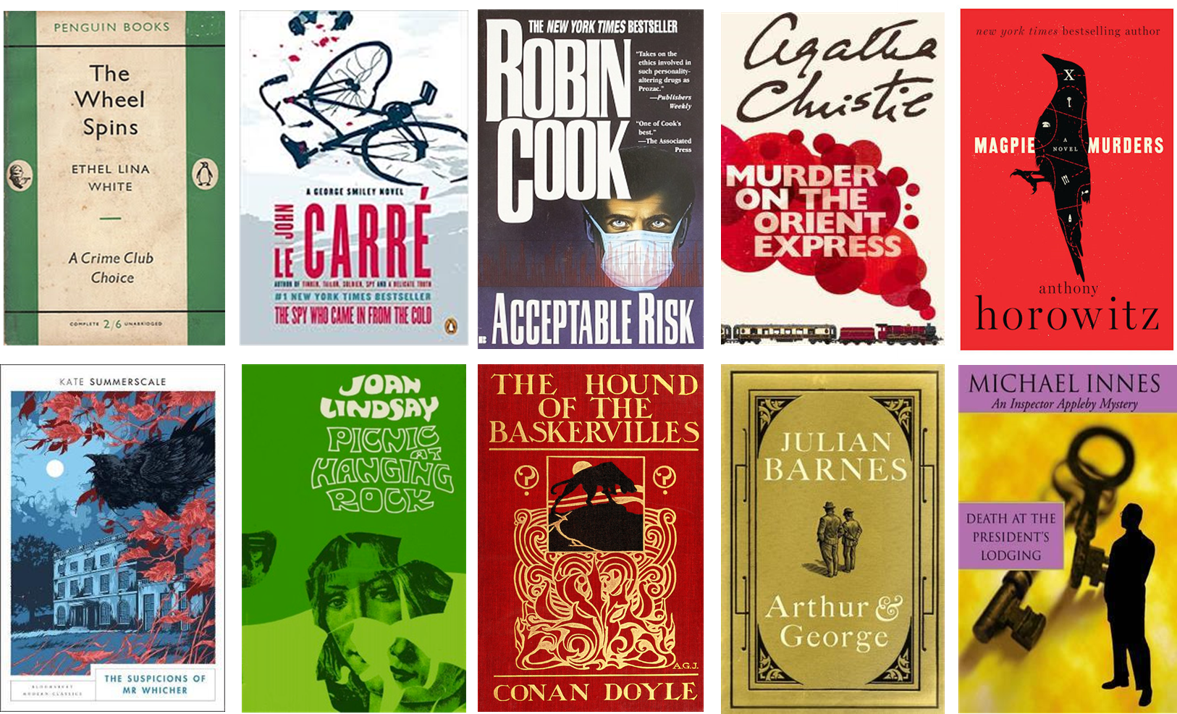JUNE 26, 2023 – (Cont.) Gaga was quite a reader, but she kept to the genre of old-fashioned mysteries. She’d send UB on regular expeditions to the public library, and he’d go to the mystery section and pull two or three books off the shelf on each visit. Gaga’s system for avoiding repeats was to fold over the top corner of page 45 of a book after she’d finished reading it. UB remarked once that by the time Gaga was in her mid-90s, it was hard to find a library mystery book that didn’t have the corner of page 45 folded back.
Gaga was different from UB and Grandpa and Mother. She was always down to earth, rational, reasonable (though decidedly opinionated), even-keeled, and she kept in very close order all that was under her domain. When I was young, the house was beautiful. And neat and clean. Every room of it, except UB’s. But as her knees gave way—the result of childhood rickets—and she had to use a walker, then a wheelchair, and her mobility was limited, the corridor of orderliness narrowed to her bedroom, her daytime sitting room, her lavatory, and a portion of the kitchen.
She wouldn’t allow people to chew gum in her presence, and she followed the rules of etiquette and cordiality without the slightest hint of affectation or pretension. But Gaga loved British royalty, and Mother told me that when Queen Elizabeth II was a very young princess, Gaga insisted on dressing up Mother as if she were a princess. By the time I came along, of course, Gaga was in her 60s, but I remember her public appearance as nicely elegant, not to impress others but to show them respect. Even in extremely old age, Gaga’s attire was never odd or slovenly.
Frankness was Gaga’s hallmark. This came out in startling ways, but you learned to respect her honesty, even if you could never accept her views. If you asked Gaga how she liked your new shirt, she’d tell you. If she thought it was nice, she’d say, “That’s nice,” but if she didn’t like it, she’d tell you that too. “I don’t,” she’d say in the latter event, and then she’d say, “Since you asked. No, I don’t like it.”
Likewise with people. Nina had a close college friend named Mary Ann, from Torrington, Connecticut. During breaks and weekends while the two were students at Connecticut College in New London, Nina would visit Mary Ann’s family in Torrington, and Mary Ann would hang out with Nina at the “Escape Hatch,” Gaga and Grandpa’s house overlooking Hamburg Cove in Lyme, not far from New London. One of my visits with Gaga occurred soon after Mary Ann had been a weekend guest. Gaga described the occasion.
“Your sister brought her friend over to the house, and we had a wonderful time. We played Scrabble and we talked and then Grandpa took us all to the Dock ‘n Dine, and from there we drove the girls back to campus. It was all a wonderful time.” Then came the bomb. “Mary Ann is such a nice girl. Too bad she’s Catholic.”
But it got worse. I remember once Gaga bemoaning the browning of America. “They’re simply letting too many dark people into this country,” she said. “When I was growing up it was nearly all white, and the few dark people who were around knew their place and were well-behaved. But now there are many more dark people around and they have no manners. I just don’t like that.” Yet, when Gaga was in her 90s, she was perfectly comfortable with, even fond of, her “very dark” Jamaican nurse’s aid, and she spoke glowingly of “Jimmy,” the family’s Black chauffer, cook, and gardener—no doubt because those people filled what in Gaga’s mind were traditionally subservient roles for Blacks. (Cont.)
Subscribe to this blog and receive notifications of new posts by email.
© 2023 by Eric Nilsson
